An online media buying agency that reflects your ambition.
If you fail to plan, you’ve planned to fail. Media planning and buying is a process that, if given sufficient time and love, will pay dividends for your brand and fast-track its growth. The digital media landscape is constantly changing and requires a completely different approach from traditional media. From the outset, with digital media planning and buying, we’re thinking about the attribution plan, as digital is inherently more measurable when compared to traditional media. Also, there is more available data for digital media to consider when planning and buying.From the outset, with digital media planning and buying, we’re thinking about the attribution plan, as digital is inherently more measurable when compared to traditional media. Also, there is more available data for digital media to consider when planning and buying.
Talk to a strategist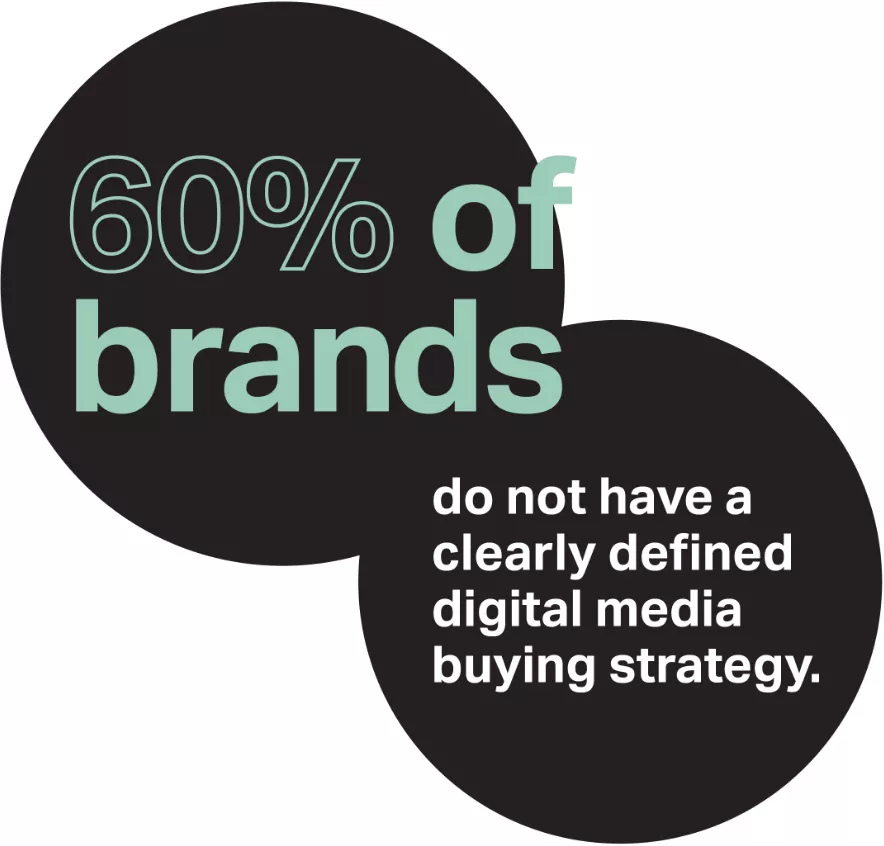
Media planning and buying: when you aim at nothing, you’re bound to hit it.
A digital media budget without a detailed plan that takes into consideration audience insights, efficiency of the channel and its proper place in the customer journey is simply a fancy advertising schedule (there, we said it).
Most brands would increase their ROI if they scrutinise their media planning and buying more thoroughly, ensuring it matches their digital media strategy and ATL strategy (if they have one).
See how True attacks the media planning and buying process below.
Tell me more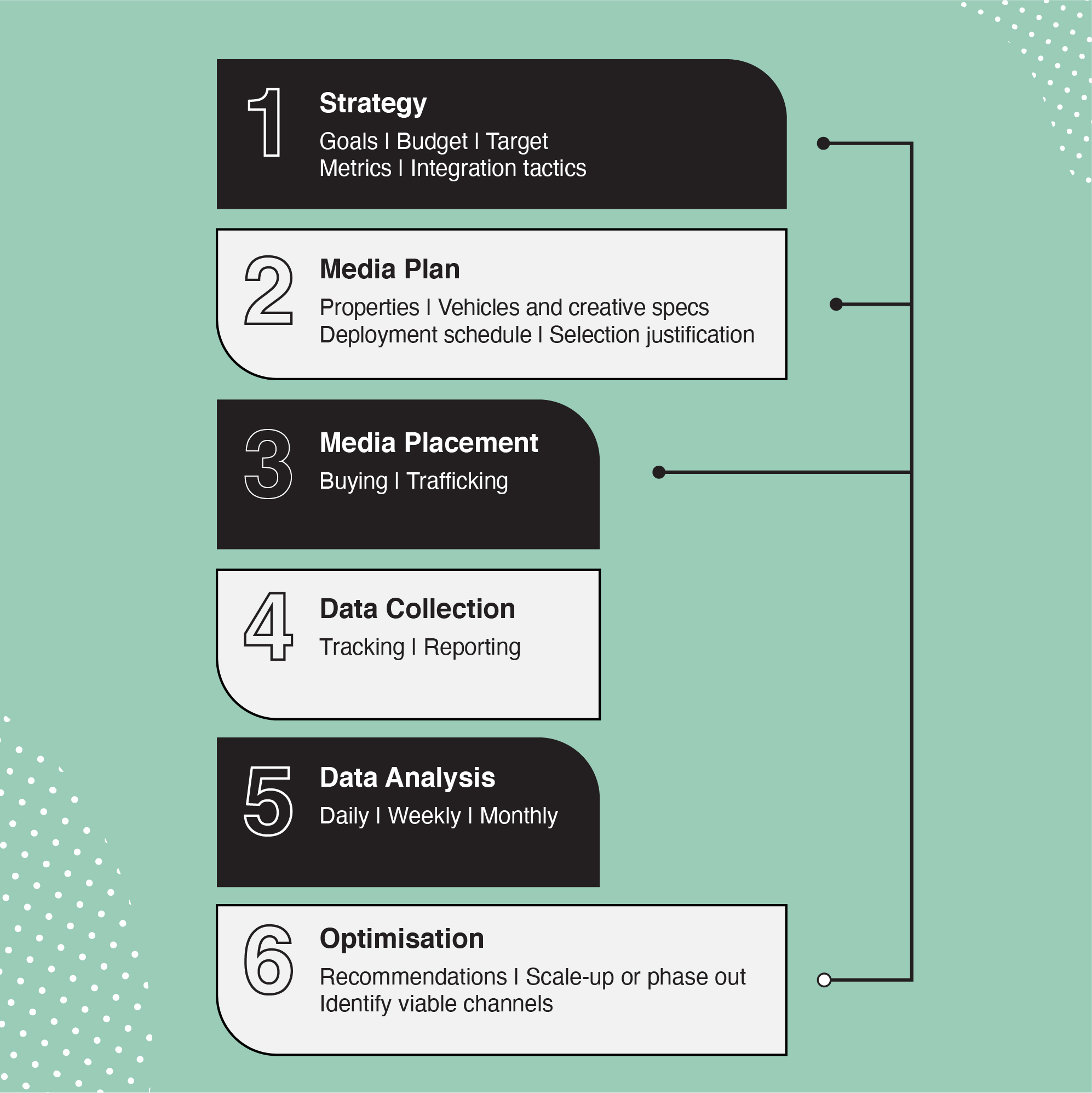
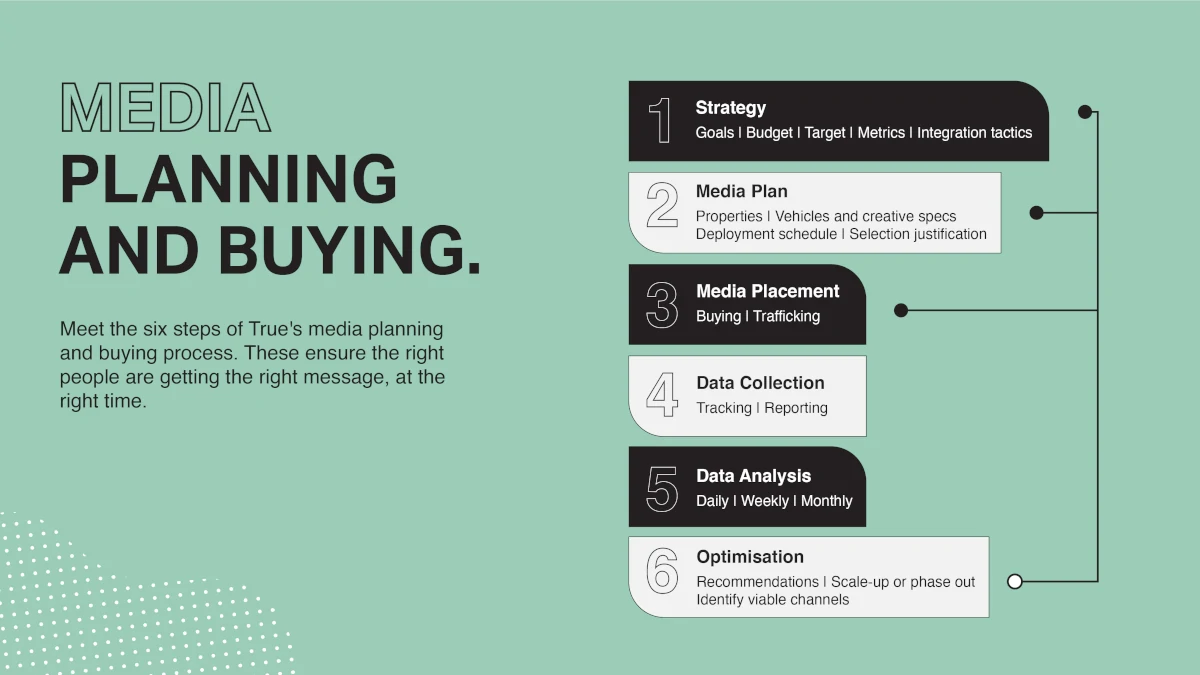
Just go with the flow chart.
Media planning and buying’s most overlooked elements.
Choosing an agency partner based on rate.
The old adage “You get what you pay for” is true when it comes to an agency partner. Cheaper rates often mean cheaper solutions. Instead of trying to save on your budget, search for more valuable metrics and KPIs that provide more insight into the level of service you’re getting.
How much experience do they have in the field? Who are their digital partners? How well do they align with your brand’s values? Asking and finding the answer to these more important questions will lead you to a better ROI.
How much experience do they have in the field? Who are their digital partners? How well do they align with your brand’s values? Asking and finding the answer to these more important questions will lead you to a better ROI.
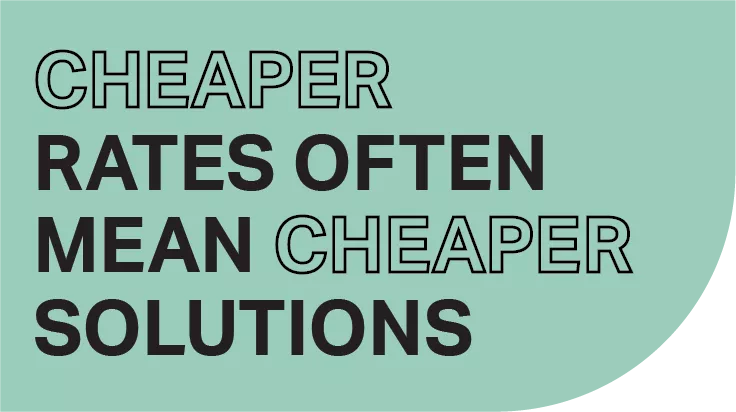
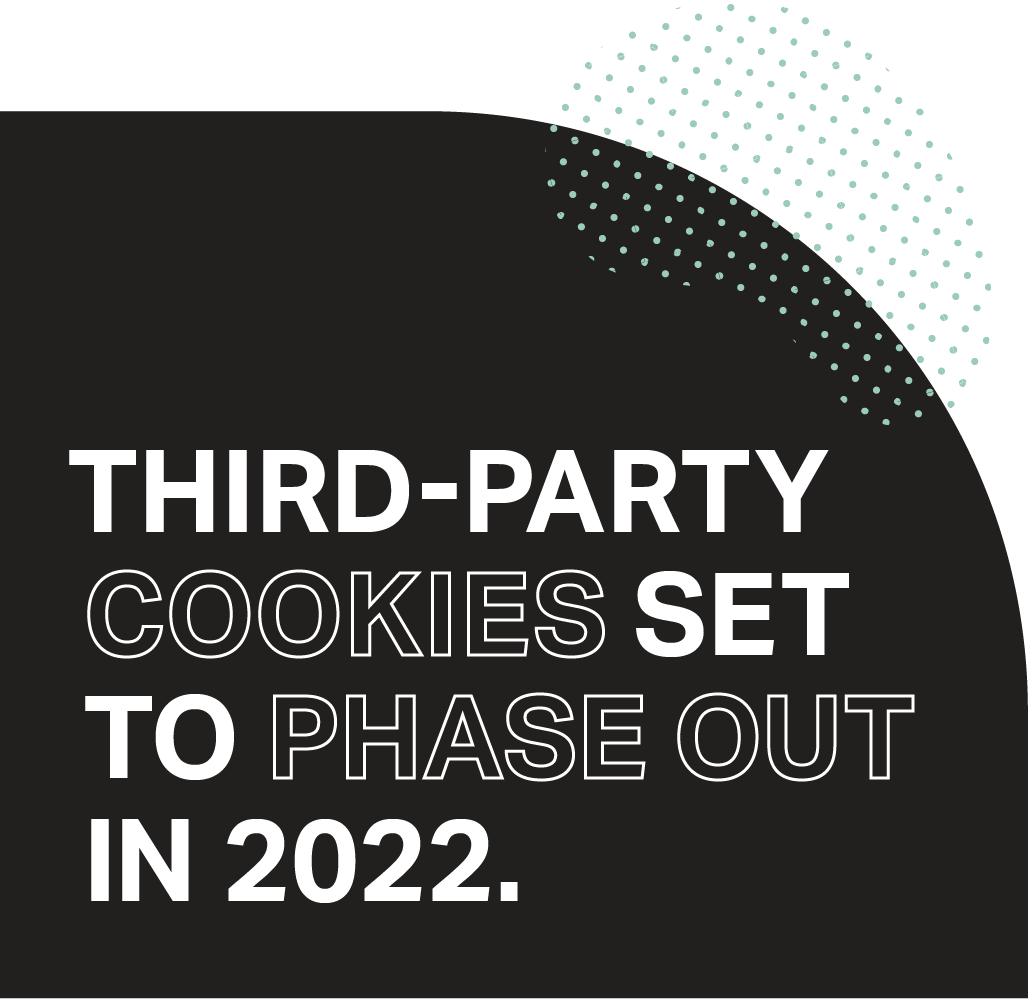
Not considering first-party data.
In an age where third-party data is coming under more and more scrutiny – with third-party cookies eventually being phased out in 2022 – the importance of collecting valuable first-party data is paramount. As it stands, according to the IAB, 53% of data decision-makers are not yet using their first-party data for their own advertising.
This mindset is beginning to shift. Not only do you have insights that are collected in compliance with GDPR regulations, you can also trust them without a shadow of a doubt. The effectiveness of this data is also translated into walled gardens like Amazon and Facebook, opening up targeting possibilities previously unavailable.
This mindset is beginning to shift. Not only do you have insights that are collected in compliance with GDPR regulations, you can also trust them without a shadow of a doubt. The effectiveness of this data is also translated into walled gardens like Amazon and Facebook, opening up targeting possibilities previously unavailable.
Talk to a strategistNot using dynamic creative.
Too often we see brands not utilising the full capabilities of what the digital space has to offer. Creating a custom, personalised experience for your consumer is the piece of the puzzle that frequently gets ignored in the digital media planning and buying phase.
Enter dynamic creative optimisation, or DCO if abbreviation is your thing. DCO allows us to test hundreds, sometimes even thousands, of different variations on your ads. CTAs, creative, descriptions, buttons… the list goes on. This tactic is extremely useful particularly in retargeting, as this truly unique experience makes viewers more likely to convert.
Enter dynamic creative optimisation, or DCO if abbreviation is your thing. DCO allows us to test hundreds, sometimes even thousands, of different variations on your ads. CTAs, creative, descriptions, buttons… the list goes on. This tactic is extremely useful particularly in retargeting, as this truly unique experience makes viewers more likely to convert.
Growth hack.
Hyper-targeted audiences yield exponentially better results. Overlay your existing audience data such as those found in Google Analytics to in-market segments to create super precise targeting.
Tell me more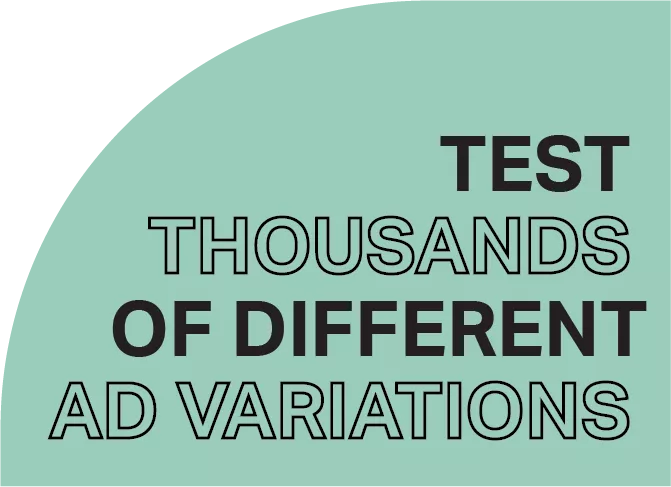
Growth via media planning and buying.
9%
CPA reduction.
51%
increase dwell time.
10,084
sessions.
27.67%
decrease in CPA.
Media planning and buying – a closer look.
We’ve said it before, we’ll say it again. Your objective and ambition are the most important things throughout your entire campaign. True always has this at the top of our minds. Using this as our guide, media planning and buying is simply a matter of reverse engineering the steps to get there. If a placement doesn’t make sense with the end goal, it doesn’t make sense in our media plan. It’s through this mindset that we’re able to dismiss unnecessary channels and risks in order to make the most effective use of your marketing dollars.
Look, we get it. Researching and experimenting on every digital platform available is a chore, not to mention a huge time-burner. We’ve partnered with multiple data analytics providers and publishers to not only produce the deepest and most current audience data, but also the widest selection of digital platforms that offer brand safety and efficiency.
But they won’t. Long has the battle between walled gardens (such as Google, Facebook and Amazon) and digital marketers been fought. These tech giants opposed providing their collected data to external parties. Marketers were unable to unlock the full potential of their own data on these sites due to the secrecy of the platforms. However, with the phase out of third-party cookies in 2022, the power is slowly coming back into the hands of the brands with first-party data. Applying this data to your digital campaigns is a vital factor during our media planning and buying process.
Brand safety is often overlooked in the digital media planning and buying phase. Although, according to a study conducted by one of our partners, Sizmek, 80% of brands have developed their own brand safety guidelines for their agencies and partners to follow. Placements are carefully selected throughout the media planning and buying process to keep your brand’s image reputable. The last thing you want to hear is one of your ads being seen on an adult content site. True has partnered with reliable data service providers (DSPs) and publishers to ensure you don’t have to write an unnecessary PR statement.
Two months of data is optimum for substantial campaign refinement. The plan for obtaining that data needs to be established early on during the digital media planning and buying phase. Not all data is created equal. The set up of attribution and data inputs most relevant to the business outcome need to be architected correctly to ensure the most relevant data is collected. After eight weeks of data collection, we begin to see trends that can lead to significant optimisation of channels and messaging. Once we have the data, we use dynamic creative optimisation to maximise efficiency.
Could your ads be better placed?
Click below to get in touch with our team of digital experts.
Talk to a strategist